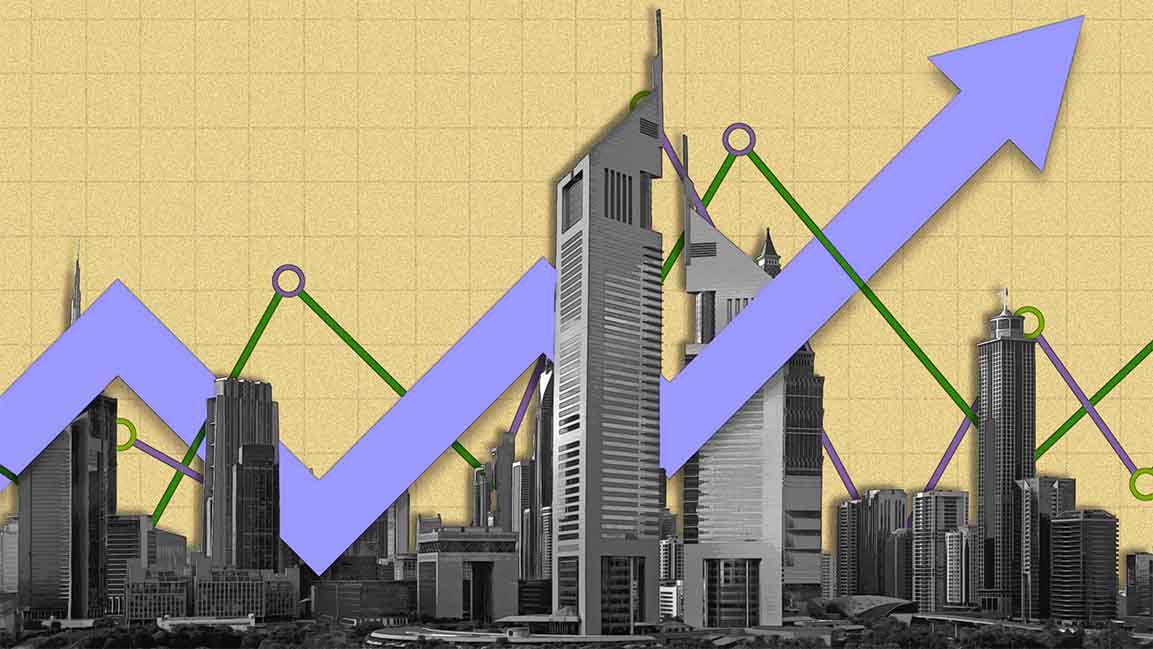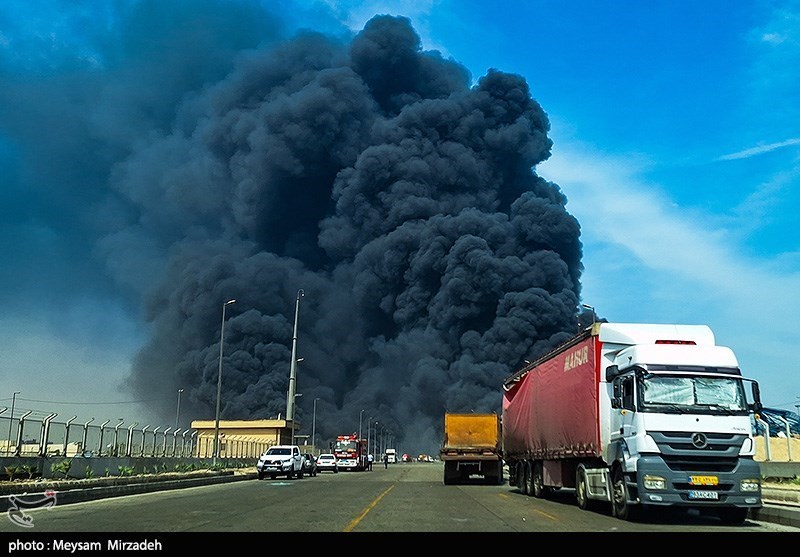Alwaght- In many Arab countries, Eid al-Adha is one of the most significant holidays of the year. During this occasion, family shopping becomes especially widespread. People typically buy gifts such as clothing and animals for sacrifice, known as Qurban. Additionally, spending on family entertainment and travel during Eid is often higher than on regular days of the year.
However, reports suggest that this year, the peooley in the Persian Gulf monarchies have been facing growing inflation and high prices. According to Khaleej online, this year during Eid al-Adha thousands of families have struggled with waves of inflation and higher prices of goods and services in many countries was tangible.
A report by the GCC Statistical Center shows that the inflation rate in the (Persian) Gulf Cooperation Council states reached about 2.4 percent in 2024, affecting the costs of food, rent and services. According to the report, the average value of orders during the Eid al-Adha holiday increased from $37 to $40 on average in the Persian Gulf Arab countries, and in Saudi Arabia, electronics topped the list of purchases with 25.2 percent. After that, household appliances and fashion were the top items with the highest price increases in Arab kingdom.
World Bank report
The World Bank announced the inflation rate in the Persian Gulf Arab countries around 2.1 percent in 2024. Meanwhile, some sectors, such as housing, continue to face inflationary pressures.
On the other hand, tariffs imposed by the new Trump administration in the US could lead to increased trade restrictions and exacerbate inflationary pressures in the Arab countries in 2025. According to the International Monetary Fund, global inflation is expected to reach 4.2 percent in 2025 and 3.5 percent in 2026.
Dubai’s inflation rate reached 3.3 percent in 2024, similar to 2023. In contrast, the rest of the Persian Gulf states recorded lower inflation rates than Dubai, with Kuwait’s annual inflation rate falling from 3.4 percent in 2023 to 2.5 percent in 2024. In contrast, Saudi Arabia recorded a slight increase, with its annual inflation rate rising from 1.5 percent in 2023 to 1.9 percent in 2024.
Kuwait
The inflation rate in Kuwait in December 2024 increased 2.5 percent compared to the year before, mainly driven by the 5.1 percent increase in clothes, footwear, and 5.0 percent increase in food and drinks prices. This increase was driven by higher prices of grains, bread, meat, chicken, and fish, and sea food. The clothing and footwear index also saw a slight increase due to an overall increase in prices in this category.
Meanwhile, the furniture, equipment and home maintenance index, the third largest component of the overall index, rose 3.5 percent, while inflation in the education sector remained relatively flat, registering a slight increase of 0.7 percent. In contrast, the transportation index, which accounts for 7.5 percent of the overall index weight, fell 1.5 percent year-on-year due to lower vehicle purchase prices and operating costs of personal transportation equipment during 2024.
Saudi Arabia
In Saudi Arabia, inflation maintained a fixed pace, remaining below 2 percent. The Consumer Price Index (CPI) increased by 1.9 percent in December 2024 compared to the same period of the previous year, mainly due to an 8.9 percent increase in the prices of housing, water, electricity and other fuels, which are the heaviest categories in the index. This increase was due to a 10.6 percent increase in rent, supported by a 9.9 percent increase in villa rental prices.
The growth in food and beverage prices was lower during 2024, recording a slight increase of 0.8 percent, driven by an increase in the prices of meat and poultry. In contrast, the price of personal goods and services increased by 2.2 percent in December 2024 compared to the previous year, driven by a 20.2 percent increase in the price of jewelry and watches. The price of education increased by 1.1 percent during the same period, driven by a 1.8 percent increase in middle and high school tuition fees. In total, six of the 12 sub-categories of the Consumer Price Index (CPI) experienced increases and six others experienced decreases in prices in December 2024 compared to the previous year. The furniture and household appliances category decreased by 2.8 percent, driven by a 5.1 percent decrease in the prices of carpets, flooring and furniture. The clothing and footwear category decreased by 2.2 percent, driven by a 4.2 percent decrease in the prices of ready-made garments. Meanwhile, the transportation category recorded a 2.5 percent decrease, driven by a 3.9 percent decrease in the car prices.
UAE
The CPI of Dubai in 2024 saw a 3.3 percent annual increase, in line with the annual average of 2023. This growth was primarily attributed to a 6.7 percent increase in the housing, water, electricity and gas category, which is the heaviest weighted category, during 2024. The food and beverage group, the third largest by weight, saw an average increase of 2.4 percent during 2024, compared to an increase of 4.6 percent in 2023. In contrast, the transport group (the second largest group by weight) recorded a decrease of 2.2 percent year-on-year in 2024, compared to an average decrease of 5.7 percent in 2023, negatively impacting the growth of the previous two categories during that period. It is noteworthy that Dubai's average annual inflation growth forecast for 2024 was slightly higher than the IMF's estimate of the UAE's expected average overall inflation rate of 2.3 percent for 2024.
Qatar
Inflation in Qatar rose 0.2 percent in December 2024 year-on-year, recording the second lowest average annual inflation rate in four years. Inflation growth in Qatar moderated after four out of eleven sub-indices declined in December 2024, limiting the increase in inflation in December 2024. The food and beverage category, one of the heavyweight categories, decreased by 2.2 percent in December 2024 compared to the previous year, while the housing, water, electricity and gas index, another heavyweight sub-indices, decreased by 4.2 percent in December 2024 compared to the previous year.
On a monthly basis, Qatar's CPI increased by 0.87 percent in December 2024 compared to the previous month. Qatar's average monthly inflation rate between 2009 and 2024 averaged 0.09 percent, reaching a high of 1.59 percent in December 2023 and a low of -2.6 percent in January 2022.
Bahrain
Im Bahrain, inflation rate remained stable, recording an annual increase of just 0.5 percent in December 2024, with the overall CPI reaching a 12-month low of 101.1 points. In terms of monthly change, Bahrain’s CPI fell by 0.1 percent during the month. The tiny kingdom recorded the second-lowest inflation rate among the Persian Gulf countries in December 2024.
In comparison, the food and non-alcoholic beverages index recorded a slight decrease of 0.2 percent year-on-year, while the education index showed a slightly higher growth of 0.6 percent over the same period. According to the IMF’s forecast, Bahrain is expected to record the third-lowest inflation rate among the Persian Gulf monarchies at 1.8 percent in 2025, behind Qatar and Oman, at 1.5 percent and 1.4 percent, respectively.
Oman
Oman's CPI in December 2024 saw a slight increase of 0.7 percent compared to the year before. The inflation in the sultanate had a downward trend all the year. The slight increase in inflation was primarily driven by a 1.7 percent annual growth in the food and beverages index, the second largest sub-index by weight. Within this category, prices of vegetables rose 7.6 percent, while the milk, cheese and eggs category experienced a 3.8 percent increase in December 2024. Meanwhile, prices of bread and cereals remained flat, while the non-alcoholic beverages category recorded a slight 0.5 percent annual decline. In contrast, prices of fish and seafood fell 6.3 percent year-on-year. Additionally, furniture and home appliances in the same period increase 0.4 percent compared to the year before. The tobacco, recreation, and culture indices were respectively 0.0 and 0.6 percent, remaining largely flat. The transportation index decreased 0.8 percent compared to the year before, while the housing, water, and electricity remained unchanged.



























